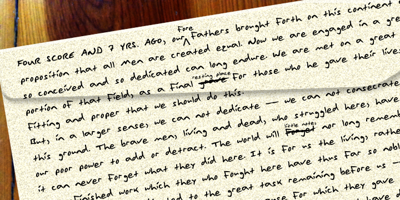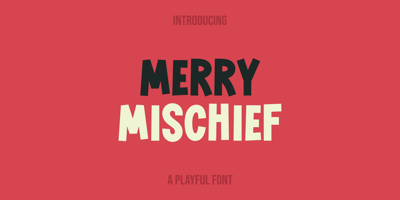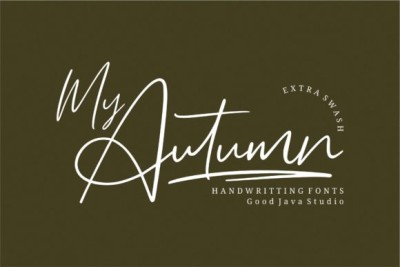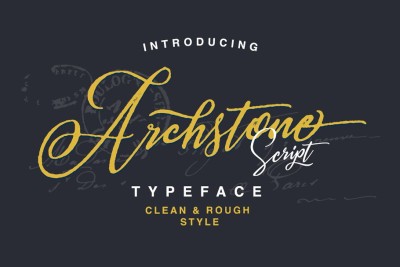State-by-State Typography Trends: How Fonts Vary Across America
State-by-State Typography Trends: How Fonts Vary Across America
Typography preferences across the United States reveal fascinating regional patterns that reflect local culture, industry influences, and historical traditions. From the tech-minimalist fonts dominating California's Silicon Valley to the ornate scripts adorning Louisiana's hospitality brands, American typography creates a rich tapestry of regional design languages that tell the story of our diverse nation.
Understanding these state-by-state typography trends isn't just academic curiosity – it's strategic intelligence for businesses, designers, and marketers seeking to connect authentically with local audiences. Regional font preferences influence consumer trust, brand perception, and marketing effectiveness in ways that can make or break local business success.
This comprehensive analysis reveals how geography, industry, culture, and history shape typography choices across all 50 states, providing actionable insights for creating location-specific brand strategies that resonate with American consumers.
The Technology Corridors: West Coast Minimalism
California: The Kingdom of Sans-Serif
California's typography landscape is dominated by clean, modern sans-serif fonts that reflect the state's technology industry influence and progressive culture. From San Francisco startups to Los Angeles entertainment companies, California brands consistently favor fonts like Helvetica, Futura, and custom geometric typefaces that suggest innovation and forward-thinking.
Silicon Valley has created its own typographic vernacular, with companies like Apple, Google, and Facebook establishing design patterns that influence businesses throughout the state. The preference for minimalist typography extends beyond tech companies to California's wine industry, sustainable fashion brands, and even traditional sectors like agriculture and manufacturing.
Los Angeles adds a creative twist to California's minimalist trends, with entertainment and media companies often choosing fonts with subtle personality – clean sans-serifs with humanist touches that remain camera-friendly while conveying creativity and accessibility.
Washington: Corporate Clean Meets Artisanal Craft
Washington State presents a unique typography duality that reflects its diverse economy. Seattle's corporate giants like Microsoft, Amazon, and Starbucks favor sophisticated, readable fonts that work across global markets and digital platforms. Microsoft's Segoe UI and Amazon's custom font systems represent the pinnacle of corporate typography efficiency.
However, Washington's thriving craft culture – from microbreweries to artisanal coffee roasters – embraces handcrafted typography that suggests authenticity and local pride. These businesses often choose hand-lettered scripts, vintage-inspired serifs, and custom letterforms that distinguish them from corporate competitors.
The Pacific Northwest's environmental consciousness also influences typography choices, with many brands choosing fonts that suggest sustainability and organic quality through softer edges and natural proportions.
Oregon: Quirky Creativity with Practical Purpose
Oregon's "Keep Portland Weird" ethos extends to typography preferences that balance creativity with functionality. Local businesses often choose fonts with distinctive personality – quirky sans-serifs, vintage revivals, and custom lettering that reflects the state's independent spirit while maintaining practical readability.
Portland's design community has particular influence on statewide trends, favoring typography that feels handcrafted but professional, authentic but accessible. This preference extends throughout Oregon's creative industries, from craft breweries to sustainable fashion brands.
The Northeast Establishment: Traditional Authority
New York: Financial Power Meets Creative Energy
New York State's typography reflects the tension between Wall Street's conservative traditions and the creative energy of its advertising, fashion, and media industries. Financial institutions in Manhattan consistently choose authoritative serif fonts like Times New Roman variations and custom corporate typefaces that convey stability and trustworthiness.
However, New York's creative industries push typographic boundaries with experimental fonts, custom lettering, and avant-garde approaches that influence national design trends. The state's fashion industry, concentrated in Manhattan's Garment District, often favors high-contrast serifs and dramatic display fonts that photograph well and convey luxury.
Upstate New York's typography tends toward more conservative choices that reflect the region's manufacturing heritage and agricultural traditions, often choosing robust sans-serifs and readable serifs that work across diverse applications.
Massachusetts: Academic Authority with Tech Innovation
Massachusetts typography reflects the state's unique position as both an academic powerhouse and technology innovator. Universities like Harvard and MIT influence regional preferences toward classical serif fonts that convey intellectual authority and institutional credibility.
Boston's growing tech sector adds modern elements to this traditional foundation, with companies choosing fonts that balance innovation with respectability. The result is typography that feels both cutting-edge and established – clean sans-serifs with subtle humanist touches or contemporary serif fonts with classical proportions.
The state's healthcare and biotechnology industries favor typography that conveys precision and trustworthiness while remaining approachable for patient communications.
Connecticut: Hedge Fund Minimalism
Connecticut's concentration of financial services companies creates typography preferences that emphasize trustworthiness, sophistication, and global credibility. The state's brands consistently choose clean, readable fonts that work across international markets while conveying American financial expertise.
Custom corporate fonts dominate Connecticut's business landscape, with companies investing in proprietary typography that reinforces their premium positioning and institutional credibility.
The Southern Tradition: Hospitality and Heritage
Louisiana: Ornate Celebration
Louisiana's typography reflects the state's unique cultural heritage, blending French elegance, Spanish influences, and American jazz culture. New Orleans businesses often choose elaborate script fonts, decorative serifs, and custom lettering that celebrates the city's festive spirit and cultural richness.
The hospitality industry, crucial to Louisiana's economy, favors typography that suggests celebration, tradition, and personal attention. Restaurant menus often feature hand-lettered scripts, while hotels choose elegant serifs that convey luxury and Southern hospitality.
Louisiana's oil and gas industry provides interesting contrast, choosing more conservative typography that aligns with corporate standards while maintaining enough regional character to feel authentically local.
Texas: Bold Independence
Texas typography embodies the state's larger-than-life personality and independent spirit. Businesses consistently choose bold, confident fonts that command attention and convey strength. Sans-serif fonts with substantial weight and presence dominate corporate communications, while consumer brands often choose custom lettering that feels authentically Texan.
The state's energy industry influences typography preferences toward robust, industrial-feeling fonts that suggest reliability and power. However, Texas's growing tech sector, particularly in Austin, introduces more minimalist approaches that balance innovation with the state's bold character.
Regional variations exist within Texas, with Houston's international business community favoring more conservative typography while Austin's creative scene embraces experimental approaches that reflect the city's "Keep Austin Weird" culture.
Georgia: Southern Elegance Meets Modern Business
Georgia typography balances traditional Southern elegance with contemporary business requirements. Atlanta's role as a major business hub influences statewide preferences toward sophisticated fonts that work in corporate environments while maintaining enough warmth to feel distinctly Southern.
The state's hospitality industry chooses typography that suggests Southern charm and personal attention, often favoring script fonts and elegant serifs that convey tradition and quality. However, Georgia's growing film industry and technology sector introduce more contemporary approaches that push beyond traditional Southern typography stereotypes.
The Midwest: Practical Reliability
Illinois: Corporate Headquarters Sophistication
Illinois typography reflects the state's role as a corporate headquarters hub, with Chicago hosting numerous Fortune 500 companies that influence regional design standards. The preference leans toward sophisticated, readable fonts that work across global operations while maintaining enough character to feel distinctively American.
Chicago's architecture and design heritage influences typography choices that favor clean lines, geometric proportions, and modernist aesthetics. The city's advertising industry adds creative elements to this foundation, choosing fonts that balance corporate reliability with creative innovation.
Illinois's agricultural heritage appears in rural typography preferences that favor straightforward, honest fonts that suggest reliability and traditional values.
Ohio: Manufacturing Heritage Meets Innovation
Ohio's typography reflects the state's transition from manufacturing powerhouse to diversified economy. Traditional industries choose robust, industrial-feeling fonts that suggest reliability and American-made quality, while emerging tech and healthcare sectors favor more contemporary approaches.
Cleveland and Cincinnati's corporate scenes influence statewide preferences toward conservative typography that conveys stability and trustworthiness. However, Columbus's growing startup community introduces more experimental approaches that balance innovation with Midwestern practicality.
Michigan: Automotive Precision
Michigan's automotive heritage profoundly influences statewide typography preferences. Fonts suggesting precision, engineering excellence, and American manufacturing quality dominate business communications. Clean, technical-feeling sans-serifs and robust serif fonts that convey reliability are consistently popular.
Detroit's urban revitalization introduces edgier typography choices that reflect the city's creative renaissance while honoring its industrial heritage. These fonts often balance gritty authenticity with professional polish, creating distinctive regional character.
The Mountain West: Outdoor Adventure Aesthetics
Colorado: Active Lifestyle Typography
Colorado's typography reflects the state's outdoor recreation culture and active lifestyle brands. Companies consistently choose fonts that suggest adventure, natural quality, and authentic experiences. Hand-lettered scripts, rustic serifs, and custom typography that evokes handcrafted quality are particularly popular.
Denver's growing tech scene adds contemporary elements to this outdoor aesthetic, choosing fonts that balance innovation with Colorado's authentic, down-to-earth character. The result is typography that feels both cutting-edge and genuinely connected to place.
Utah: Clean Living, Clean Typography
Utah's typography preferences reflect the state's cultural values of cleanliness, order, and family-friendly business practices. Brands consistently choose clear, readable fonts that convey trustworthiness and accessibility. Sans-serif fonts with friendly characteristics and classical serif fonts with excellent readability dominate business communications.
The state's growing tech industry, particularly in Salt Lake City's "Silicon Slopes," introduces more minimalist approaches while maintaining Utah's emphasis on clean, family-friendly design.
Regional Typography Strategies for Businesses
Understanding Local Preferences
Successful regional marketing requires understanding local typography preferences and their cultural foundations. Fonts that work perfectly in one region may feel foreign or inappropriate in another, making regional awareness crucial for local business success.
Balancing National and Local Appeal
National brands operating across multiple states must balance consistent brand identity with regional adaptation. This often involves maintaining core typography while allowing regional variations in implementation or supporting fonts.
Cultural Sensitivity in Font Selection
Typography choices can inadvertently reference cultural stereotypes or historical tensions. Successful regional typography requires understanding not just what locals prefer, but why those preferences exist and how to honor them authentically.
Digital Age Impact on Regional Typography
Social Media Standardization
Digital platforms create pressure toward typography standardization that can erode regional character. However, successful local brands find ways to maintain regional authenticity within platform constraints.
Mobile-First Regional Design
Mobile device usage patterns vary by region, influencing optimal typography choices for local audiences. Rural areas with slower internet connections may require different font optimization strategies than urban areas with high-speed access.
Future Trends in Regional Typography
Increasing Homogenization vs. Local Authenticity
Digital globalization creates pressure toward typography homogenization, but consumer desire for authentic local connections may preserve regional character in typography choices.
Climate and Environmental Influences
Growing environmental consciousness may influence regional typography preferences, with areas affected by climate change potentially favoring fonts that suggest sustainability and environmental responsibility.
Demographic Shifts
Migration patterns and changing demographics will likely influence regional typography preferences as communities evolve and adapt to new cultural influences.
Understanding state-by-state typography trends provides valuable insight into American regional culture and consumer psychology. While digital globalization creates pressure toward standardization, regional typography preferences remain strong indicators of local values, industry influences, and cultural identity.
For businesses seeking authentic local connections, respecting and reflecting regional typography preferences can provide significant competitive advantages. The key is understanding not just what fonts people prefer in different regions, but why those preferences exist and how to honor them while achieving business objectives.
As America continues evolving, regional typography will undoubtedly shift and adapt, but the fundamental connection between place, culture, and visual communication will remain a powerful force in American design and marketing.




